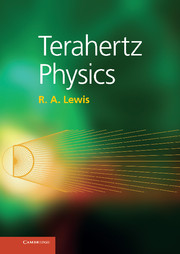10 - SPECTROSCOPY
from Part III - Applications
Published online by Cambridge University Press: 05 July 2013
Summary
This chapter uses mathematics and the mathematics increases in sophistication as the chapter proceeds. Section 10.1 requires no mathematics. Section 10.2 assumes you know about sine and cosine and how to differentiate. Section 10.3 assumes you know about trigonometry and Fourier transforms. Section 10.4 assumes you can handle exponential notation and complex numbers.
Spectroscopy is the division of light into its separate frequencies. For example, sunlight is separated into its separate frequencies by raindrops when a rainbow forms. The separate frequencies make up the spectrum. The sun and the raindrops constitute a spectrometer, a device for producing a spectrum.
In the rainbow, the blue light is separated from the green light and the red light and so on. Breaking up light into its separate components is referred to as analysis. The opposite process is synthesis – making white light, for example, by combining red, green and blue, as is happening right now on the computer screen before me as I type.
Newton made a simple spectrometer by sending sunlight through a glass prism. The different colours emerged in different directions. This is the principle behind the dispersive spectrometer: the different colours are separated in space by an optical element such as a prism or a grating. The key characteristic of the core optical element is dispersion, that is, it acts on different frequencies differently. Section 10.2 deals with dispersive spectrometers.
- Type
- Chapter
- Information
- Terahertz Physics , pp. 207 - 231Publisher: Cambridge University PressPrint publication year: 2013

